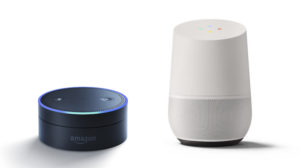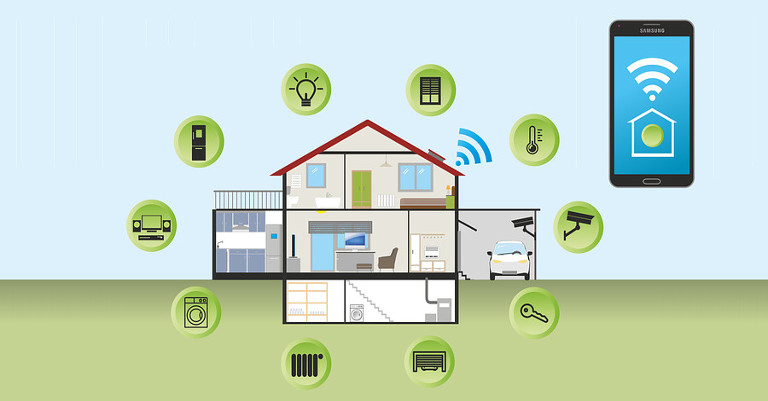What are Smart Homes
Smart homes. What exactly are these?
We often hear the word “smart” technology these days and every device has the word “smart” in it like smartphone, smart TV, smart lock, smart car, and many more. These are powerful innovations that are around to make life easier. The next big step forward for this type of “smart” technology is into our homes by integrating and making the technology work together to build an ecosystem known as a “smart homes”.
Smart homes (also often known to as home automation or domotics), is a significant new trend in today’s world of technology. Smart homes will virtually allow every electronic device in your home including your lighting, aircon system, entertainment system, security system, door access control and even appliances to be linked to your home network. This network can then be connected to the Internet, becomes an important constituent of the Internet of Things, and enables you to control it literally anywhere using any authorized smart device (like your smartphones, tablets, computer). You can even give command to your devices using voice! These additional capabilities help to increase the quality of life inside and outside the home in a variety of ways, such as automation of repetitive tasks, increased personal productivity, enhanced home security, and easier access to entertainment.
Advantages of a Smart Home
Smart homes technology is a groundbreaking innovation developed to enhance everybody’s living environment. Transforming your home to a smart home can greatly improve your control over every aspect of how your house operates, and increase the efficiency, safety and accessibility of it as well. Perhaps, like me your primary reason for wanting to invest in building a smart home is because it is simply cool. Nevertheless, smart homes offer many advantages over conventional homes.
1. Helps You In Your Daily Life – Imagine being able to turn on the air conditioning system in your home five minutes before coming back so that it will be nice and cooling when you step in after a hot day outside. You can even check if your kids are safe at home and are doing their homework instead of watching TV. You can turn off your bedroom lights from your office and even unlock your house door for your mum when you are overseas. These are just some examples of the wonderful capabilities that can greatly help you with your daily life.
2. Control At Your Fingertips (Convenience) – Simply by just integrating smart appliances into your home, such as a smart oven, using devices like your smartphone, you now have complete control of them at your fingertips anywhere in the world. Did you leave your home and forget to turn your oven off? There is no need to stress now. You can quickly and easily power off these appliances in seconds!
3. Safe & Secure – Smart homes also allow to you keep your home and family safe. Installing smart security systems enables you to monitor your home and help you to be more aware of anyone coming and leaving your house. When you are away on a holiday, you can also receive alarms and notifications from your phones for any suspicious activities. Regardless where you are, doors can be locked, security systems armed, and cameras monitored from your phone to help prevent and detect any intrusion. Hence, helping you build a safer and secure home environment.
4. Improve Quality of Life (Accessibility) – Just think about how it can greatly increase everyone’s quality of life especially for the less able and elderly. Basic everyday tasks like switching on the lights can be difficult for them. Simply by utilizing voice command to smart homes can make daily activities much easier for them. Voice-command systems can do things like control lights, air-conditioning, entertainment systems, curtains and doors.
5. Energy Efficiency – You can now monitor your energy consumption of each and every smart appliance that you installed in your home. This provides insight into your energy use and keep track which appliances use the most energy and how much their energy consumption costs you. Now you can easily set your appliance to work with the least amount of energy needed. For example, you can shape the cooling pattern of your air-conditioning system, in relation to time and temperature or it is even smart enough to learn by itself how you like to heat and cool your home. Incredibly, intelligent occupation detectors will only activate your home systems when you are present. All these helps to create a more fulfilling cooling experience but yet it still consumes less energy.
6. Home Management Insights – Each of the appliance can be monitored to the very detail such as how often you and your family watch TV and what program you or your kids watch, which lights in which room gets utilized the most, at which time of the day the air-condition was used most and at what temperature, and your energy consumption habits over time. From these insights, you are now able to analyze your household habits and behaviors, and make adjustments to live the lifestyle you desire.
7. Cost Savings – Smart home technology allows you to simply save more money! Sensors, timers and monitors ensure you only use the energy you need.
8. Increases Home Value – Having a smart home can simply give more appeal to a prospective buyer as you now have an abundance of effective selling points and simply by showing off to them how these will make life easier for them. Homes with automated systems have the potential to sell at a higher value compared to homes with conventional technologies. Automating a home can be a worthwhile investment in increasing its market value and attracting potential buyers in the future.
How to setup a smart home
Setting up your smart home is easier than you think, simply by just choosing the right smart devices and orchestrating them together. These smart devices however need a smart controller (aka virtual assistance) and a common network platform which will allow them interact with one another seamlessly.
Virtual Assistants – An example of the common smart home usually starts with a virtual voice-controlled assistant. This is typically a smart speaker with either Amazon’s Alexa or the Google Home Assistant built to assist homeowners by using voice control to activate the sensors of a device. Sensors are hard-coded to send unique signals to perform certain functions, like turning on or off. Amazon’s Alexa or the Google Home Assistant make it easy to control smart home products by saying simple commands like “Alexa, turn on the lights.”

From here, you can easily add a number of sensors with various capabilities that work seamlessly with your smart assistant of choice. This can allow lots of really exciting home automation projects, from installing voice activated lights and curtains to security cameras and door locks. Smart home system is a technology that links sensors and appliances together over the internet which allows you to monitor and control from your smartphone.
Home Network – First and foremost, one the most essential things you need to first have is a home network, be it wireless or wired, and connection to the Internet. A wired home network is just basically a set of structured data cabling installed across your home with data points. Optimal locations of all the essential data points within your home will be crucial to your home networking, hence this requires careful planning. In today’s modern home network setup, homeowners often have a hybrid of wired and wireless network.

If you have never built a home network before, there are many firms out there such as Pump IT Solution. They will assist you with your digital network communication within the vicinity of your home. Having a home network will not only be great for you to start building a smart home but also allows easier and faster access to the Internet.


0 comments on “What Are Smart Homes” Add yours →